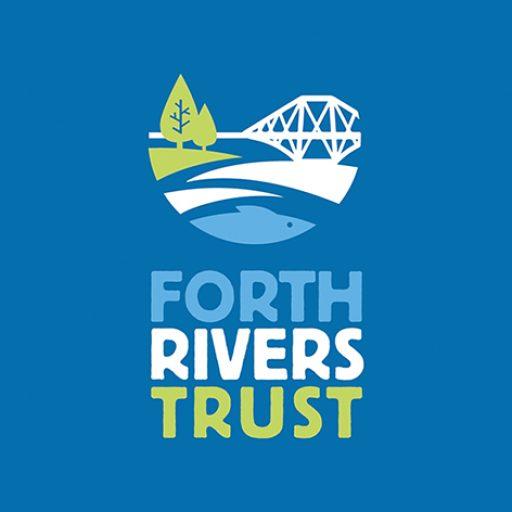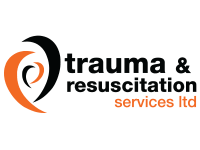SUP tour blog #3: Kit list

If you're looking to go SUP tour and exploring or SUP camping, what to take can sometimes be a bit confusing. The gear you need, what's the best way to keep it dry, and what can help keep you safe, are questions we get asked all the time.
Your SUP Touring Experience
In this third part of our SUP touring and exploring how to series, we're going to guide you through what you should take to make the best of your SUP tour experience. This is a pretty long blog, because to be honest, there's a lot of kit to get through that you might end up taking if you go on longer or overnight camping expeditions.
We've split the blog into sections to allow you to easily see what you should take, depending on the type of trip you're going on; Dry bags. Safety gear. Food. Camping gear Cooking gear and Clothing
Waterproof bags for Paddle Boarding
Whatever the type of touring you're doing, you're probably going to want to take some things with you, which you're going to need to keep dry regardless of the activity. Therefore, you'll probably need some dry bags. There are loads of dry bag options out there. Which ones you use will come down to personal preference, but I'm just going to highlight what I use, and why, as well as some of the features to consider that I found really helpful from my previous experience.
Day tours and short SUP trips
To start with, if I'm doing some very basic SUP touring and I am just out for a few hours I might go to dry bag waist pack . There's a few of these available on the store. I like to have a waterproof waist pack because it's really quick access to my belongings when I'm on the paddle boards and regardless of the weather conditions my valuables stay dry. It's handy for carrying food, a jumper, my phone (always in a waterproof phone case) or camera with me at all times. It even has a zip out drinks bottle holder. You don't have to use a dry bag waist pack, a small 10 to 20 litre dry tube works really well too. But the benefit of a waist pack is that you don't have to stop paddling, sit down on your board, access things. If you get somewhere and want to do some exploring (or go to a café/ pub), it's also a really easy bag to carry.
What about if I go on a longer adventure?
If my trip is any more than a day out, if I'm doing an overnight trip and carrying cooking equipment, food or camping, I tend to have a completely different setup. It's a setup that I've tested and refined over the years and I find it works really well for me.
I take several waterproof bags. Firstly, a 60 litre main kit bag. I use an OverBoard waterproof backpack / dry tube , so I can carry it on my back when foraging or travelling. Secondly, I take a 20 litre deck bag as it offers quick access to safety equipment, warm clothes and snacks. If I need to keep kit like a down jacket safe and dry I often use a vented dry bag . They're great for packing compressible items into and then squeezing out all the air, without compromising on waterproofness. I'd then stow this in my deck bag giving that extra level of protection which is essential for bad conditions. I'd always recommend using dry bags made from a thick PVC material on the deck and avoiding the lightweight nylon woven dry bags / stuff sacks . Whilst these are great inside larger waterproof bag for sorting gear, they're only splash proof and in the event your kit goes overboard it wont be safe.
Thirdly, I always take my OverBoard waist pack . I really like this bag because the material is super soft yet durable, to allow me to pack it up and secure at once I've access to nothing in the bag.
Sometimes I also have a forth bag if I expect things are going to get really wet. I use a Watershed Animas backpack . Thanks to its mega zip-lock style seal, this bag can handle a full submersion. In fact, these bags are so darn waterproof, Watershed rate them to 300 feet, that's 91 meters!!! Yes they come at a premium price point, but they'll last you for decades. In challenging conditions you need quality equipment.
Packing light on the water
Although you have lots of space on the deck to be able to carry multiple bags, it is easy to carry too much. So focus on packing light and think about how you'll transport your gear at each end of your paddle. Qualified instructors and experienced guides will tell you this will make or break your boarding experience. A few bigger waterproof bags are far easier to handle than half a dozen smaller ones. .
Finally, I pack my kit in my main kit bag using lightweight dry bags . Not only does this give me another layer of protection if the water gets in, separating kit types into different kinds of bags makes it really easy to find the things you want without unpacking your whole set. You can keep stinky damp clothes away from clean.
Should I pack Safety Equipment?
Now if you're going a little further than normal in your SUP touring and perhaps entering different types of water, you have to make sure that you think about the associated risks, and the safety kit needed. There are loads of potential safety kits combined to take with, and what you decide to invest in is really linked to the amount of risk you want to take, but you really do need to be responsible. We highly recommend you take a waterproof first aid kit. This one has all the basics and you can easily add to it to tailor it the needs of you and your group.
There is no brainer equipment. If you're out there on the water, remember always wear a leash and insure it's the right type of leash for the type of paddling you're doing. It's your lifeline to your board. Also, we can't recommend wearing a decent PFD highly enough. We know it's personal preference, but accidents can and do happen on water. Something that is comfortable, not too bulky and doesn't restrict you movement. Chaffing is no fun!
Keeping safe on your expedition is best approached by detailed planning. You want to focus on the amazing scenery and not on worrying if you have the right kit. This planning will help you identify hazards and plan how you prevent them turning into incidents that might compromise safety. You'll also be able to decide on the correct safety equipment or level of safety equipment that you need to carry. You may also want to know your groups board experience and fitness levels so you know what levels of experience they have and what kind of paddle they can cope with.
Being able to communicate when on your expedition is essential to prevent danger, and allow you to get updates on weather and conditions, communicate with the other members of a team or safety contacts as well as stay in touch with other marine traffic or authorities that will help you keep safe. It also allows you to raise the alarm if things do go wrong. Nearly all of us have a smartphone these days, and it's a really good piece of safety equipment that you should take with you is a bare minimum, but in some instances, it's not really enough, and you might want to consider additional communication at devices, such as things like the HF radios, a VHF radio is a standard tool for communicating on the water, particular coastal waters. It will also allow you to access certain level of weather information that can be useful in some places, a VHF radio is also a really useful tool if you're SUP Touring in areas where there might be other marine traffic. It's the standard way for marine traffic to communicate, and you'll be able to listen in for things like shipping movements and keep yourself or your group out of danger. Bear in mind, you need a licence to operate a VHF in many parts of the world, so make sure you get your licence. If you choose to use one, I've used the HF radios to communicate with other members of my SUP group areas of poor mobile signal, allowing us to safely negotiate some potentially risky situations during expedition. By good fortune we also carry waterproof VHF cases in the store.
You need to think about using safety equipment to prevent risky situations, giving you access to information that will help keep you safe. Mobile phones and VHF radios are also really great tools should you wish to raise the alarm if you get into trouble. But there's also some other things that you might want to consider to raise the alarm.
Personal Location Beacons are great if you're going way off the beaten track. They use radio frequencies rather than phone signals to guide rescuers to you. They allow you to raise the alarm to the emergency services, almost immediately you get into trouble. There's also lots of other tools that you can use, such as flares and flashlights, but bear in mind you need to have correct training to use these. If you're likely to be remote, don't forget to take backup battery source for your phones or VHF. These are available in loads of different sizes and shapes and capacities. I choose to use this relatively compact one with integrated cables for a number of different devices, because it keeps things simple.
Now this is a very personal choice, and there's lots of different views on the subject. My suggestion is that as paddlers we need to take responsibility for our own safety, assess the risks of how we're doing. If you're unsure, take further advice, or err on the side of caution. Remember, water is very dangerous if things go wrong you could be miles from help. So you need to think about what could go wrong, and be fully prepared to deal with the situation if you ended up in the water or SUP punctured, how would you fix it?
I have the following rule of thumb for when I wear personal floatation. When I sup alone, or at night, I have an PFD on me, such as a waist PFD, or a regular life vest . I prefer an inflatable as it's less restrictive, and while I'm paddling. If I'm in a group in the day I don't always wear one unless I'm going to be offshore by more than a few hundred metres. In these situations, my leash keeps me connected to my SUP, which is my primary flotation. The exception to this rule is if I'm paddling on a river with moving water where I wear a PFD a helmet and a quick release leash, so could lose that priority flotation.
It's worth considering what spares you might want to take with you. Depending on the type of SUP Tour, I consider taking a spare paddle for longer expeditions where it might be a long way from somewhere I can get one repaired or replaced. I generally carry a three-piece paddle and lash the parts together with some electrical tape, so there's no risk of losing individual parts of that paddle while I'm paddling. If you're paddling on an inflatable SUP considering taking a spare pump for anything more than a day paddle. If its an overnighter I take one as an overnight trip just enough time for a slow leak in an iSUP to start to cause a real problem.
Fins. I always think about taking the spare one because loading your iSUP up with all this stuff puts extra strain on the fin box. If I'm paddling for a long distance or overnight, I take a spare fin. I use the same logic, as I would if I'm choosing take a spare paddle. If you're paddling in a group. Not everyone needs one of these spares. If your paddle breaks it questions whether you should be out there in the first place. And if you're using good enough quality gear, coordinate spares between yourself and your group, making sure that you have fins and enough paddles to cover the occasional breakage.
I take a first aid kit if I'm paddling on an overnight trip, or if I'm in an extremely remote location. Overnight trips introduce a lot more opportunities to hurt yourself. Cooking burns, for example or cutting yourself with a knife. Grab a waterproof one like this, it's a great bit of kit, but understand what's in it and how to use the kit. It's a great starting kit and to can always add to it.
Finally, I like to make rules around safety gear. I look at the risk and make rules when I use certain equipment. For instance, if I'm paddling alone on the coast, I'll be much more vigilant than otherwise. I make sure I can raise the alarm quickly. This might mean that I would carry an emergency beacon. Look at understand the risks and develop your own rules and stick by them. I consider a lot of my experience SUP touring, white water kayaking and yacht sailing to guide me on my decisions. If you're unsure, consider getting in touch with a SUP instructor or get some formal training.
Food & water My motto here is; food is fuel and water is life. Take enough fuel to keep your energy levels up, and enough water to keep correctly hydrated. Take easy things to snack on when you're on the board, as you might not be able to get off all the time. Have a water bottle for drinking separately to a water carrier for carrying additional water. I like to take these concentrated squash products to make purified water taste nicer and encouraged me to drink regularly. I always have a pack of purification caps with me as well because water is life and should you lose or contaminate your supply it can spell disaster. These give you the option of a super lightweight and small pack. Just think carefully about how much water you'll need. You'll always be surprised about how much water you use cooking, cleaning, and drinking when camping. Consider the temperature of the day, and if it's hot, take much more drinking water than you normally would.
With food, you have loads of options, the longer you're going up touring for the more space will be a premium, and you might need to consider expedition rations. These come in two key types; freeze dried or wet. Each have their pros and cons in terms of taste, weight and water needed to rehydrate. Plan what you need based on your expedition. If you are just going for one night and can't face expedition rations you should have enough room in your kit bags for cooking fresh food. But if you're paddling a long way, sometimes the last thing you want to do is prepare food when you get to your location. So expedition food isn't just for space saving, it's for convenience as well. As ever, store your food in either watertight tupperware or waterproof bags. Soggy biscuits don't cut it after a long paddle!
Camp Kit With camp kit there are loads of options for gear, but here's a quick run through of what you need:
Shelters, you could consider tents, bivies, tarps or hammocks. Each give you various levels of shelter or comfort. The main benefit of a bivie is it allows you to carry less gear and sleep in an extremely small space. Use a tarp to shelter from the wind or rain.
Hamocks can be a great way for a more comfortable night, so long as you have somewhere to hang one. River banks camping is great for hammocks, but on a sandy beach they're seldom idea! Tents give you the best shelter and can be very compact if you're willing to dig deep into your wallet. I sometimes take a tent and a bivie to give me options. If space in my bags allow. I like to be flexible with where and how I would sleep. You will also need something to sleep in, and you'll need a sleeping mat. Again these are available in a variety of sizes, weights, costs and thermal properties. They're inflatable and compact down extremely compact if you're willing to dig deep into your wallet. With sleeping bags, pick a sleeping bag with a season rating or comfort rating that fits the environment you're going to be in. Consider a liner as they're far easier to wash than a full sleeping bag. If you're planning on touring all year round, you may need different bags for different seasons. If you have room for a little luxury, you can also buy special camping pillows. It's not completely necessary, as you can just use your other gear. It depends on how much space you have.
If you are planning a longer or overnight trip cooking equipment should definitely be on your list. Of course you can go fully wild and take no cooker. Cooking on fires alone. We regularly do this on beaches. It's an awesome experience. But equally can be a lot of hard to find dry drift wood. For freeze-dried expedition food you basically just need to heat up the water. So a simple, lightweight camp cooker, a set of meth tins or similar pots and pans, a lighter and a spoon or fork is all you really need. I tend to always take some fire lighters with me to make the exercise of getting a fire going later on the evening. I also throw in a flint lighter as a backup spark in case my lighter fails, gets wet, or I just lose it.
Cookers There are lots of really affordable lightweight cookers out there that will allow you to use widely available camping gas canisters and cook using lightweight pots and pans. You can get set up for as little as £25. I prefer cooking on cookers that connect to the gas canister via a hose, rather than cooker connecting directly to the canister. The reason for this as it makes the cooker much more stable and prevents unwanted spillages when cooking on uneven ground. Right now, I love using this MSR WindBurner. For me it ticks a lot of the boxes. It boils water extremely quickly due to the fins. In the same way that a jet bottle works, Its bigger and good for cooking good sized meals, and the gas can be attached via a hose, which also allows me to use an adapter for European gas. It also packs up conveniently into a unit with a pan and the gas, all in one part. For me, it's slightly larger size isn't a problem for SUP Touring as we have the ability to carry a little bit more volume on our boards, compared to if you're backpacking.
If you're planning a SUP touring trip abroad, you might have some other things to think about when considering cooking, such as how you'll get your fuel to your location as it might well be problem if you're flying because you won't be able to take the gas bottle on the plane, so you'll have to get it on location.
There are also some differences between standard uses of gas bottles and attachments. For instance, in Europe, the standard gas bottle attachment for camping stoves differ from UK, so you might need to consider buying a different cooker or finding an adapter to switch between a UK to European gas canister before you go.
Clothing What you wear when paddling is a huge subject and ultimately comes down to personal preference. When SUP Tour and exploring the key thing to remember is that you're likely to be paddling for longer periods different types of conditions. So consider this when deciding what to wear. to make sure you keep yourself warm and safe if weather changes during the day you're paddling you might need extra layers, including a waterproof or windproof layers. I will generally always paddle with a waterproof jacket on, or in my dry bag, in case the temperature drops and it gets wet. When daring overnight or for several days trips you need to make sure that you have enough suitable clothing. I categorise kit into paddling clothing and kit for when off the board. I'll consider extra paddling clothing if kit gets wet, or has no opportunity to dry overnight, but also multiple layers, so I can regulate temperature in various conditions and quickly change to wearing the most suitable clothing. My non paddling clothing considers the fact that my shelter is limited, so I take multiple layers as well as warm down jacket, thermals and a woolly hat.
After a long day paddling your body could be exhausted, lower energy and keeping warm can be harder than you would expect, so suitable clothing is key to make your evening or evenings as comfortable as possible. Make sure you check overnight temperatures as well as daytime temperatures to help you take suitable clothing. In the winter months I have been known to don a full on dry suit, because, well, life is too short to be cold!
As you can see what's taken on your SUP tour and exploring adventure is a very big subject. If you have any questions, drop us an email at sales@drybags.co.uk and we'd be delighted to try and help.















